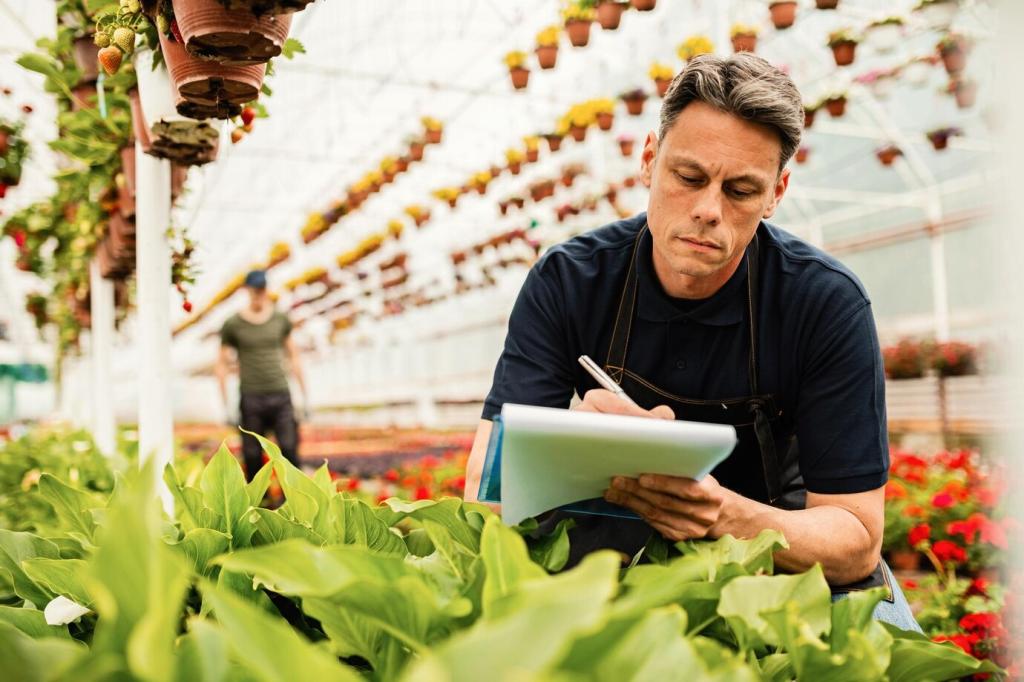Hydroponics and Aeroponics: Advancing Urban Food Production
Urban agriculture is undergoing a transformative shift, with hydroponics and aeroponics at the forefront of sustainable food production in cities. As populations grow and urban spaces become more crowded, innovative methods that eliminate the need for soil and optimize water and nutrient usage are being adopted worldwide. Hydroponics and aeroponics not only increase crop yields and ensure fresher produce for city dwellers, but they also offer environmentally conscious alternatives to traditional farming. Through cutting-edge technology, resource efficiency, and adaptability, these systems are redefining how cities can feed themselves now and in the future.

The Science Behind Hydroponics and Aeroponics
Hydroponics refers to the cultivation of plants using nutrient-enriched water instead of traditional soil. In these systems, the roots are either suspended in or intermittently exposed to a carefully balanced water solution containing all essential nutrients required for growth. Not only does this create ideal growing conditions, but it also allows cultivators to meticulously control the environment. Factors such as pH levels, nutrient concentrations, and temperature can be optimized, resulting in faster plant growth and higher crop yields. Additionally, hydroponic systems can be designed in various configurations, such as nutrient film technique, deep water culture, and drip systems, each tailored to specific plant species and available space. As a result, hydroponics can transform unused rooftops, warehouses, or even balconies into highly productive urban gardens.


One of the most notable advantages of hydroponics and aeroponics is their remarkable efficiency in utilizing limited urban space. Unlike traditional agriculture, these systems allow for vertical stacking and close plant spacing, exponentially increasing productivity per square meter. Innovative growing towers and shelving units can be installed in unused rooftops, basements, or even converted shipping containers, turning previously underutilized areas into lush, high-yield farms. The ability to precisely control the environment also encourages year-round cultivation, completely independent of seasonal weather conditions. This uninterrupted production cycle empowers urban centers to provide a consistent supply of fresh produce and reduces dependence on distant rural farms.

Water scarcity is a growing concern for cities worldwide, but hydroponics and aeroponics offer promising solutions through highly efficient water use. In hydroponic systems, the closed-loop design recirculates water, minimizing waste by delivering exactly what is needed and collecting runoff for reuse. Aeroponics elevates conservation even further, using up to 90% less water than soil-based agriculture because it delivers nutrients as a fine mist, maximizing absorption while minimizing loss through evaporation or runoff. This resource efficiency is vital for urban sustainability, especially as climate change intensifies stress on water supplies. Moreover, nutrients are delivered directly to roots without leaching, reducing pollution and promoting healthier growth.

Hydroponics and aeroponics consistently produce high-quality crops with minimal exposure to pests, diseases, and contaminants inherent in soil farming. These controlled environments use fewer pesticides or none at all, ensuring a safer and cleaner harvest. Because urban farms are often located close to consumers, produce spends less time in transit, retaining more flavor, nutrients, and freshness. This proximity also facilitates traceability, allowing urban dwellers to know exactly where their food comes from and how it was grown. For restaurants, grocers, and households alike, the assurance of clean, nutritious food right in the heart of the city is a compelling reason to embrace hydroponics and aeroponics.
Overcoming Challenges in Urban Integration
The sophisticated equipment and environmental controls required for hydroponics and especially aeroponics can intimidate newcomers to urban farming. Temperature regulation, lighting systems, pumps, and sensors demand ongoing maintenance and technical know-how. However, recent advances are making systems increasingly user-friendly, with automation, mobile apps, and fail-safes reducing the learning curve. Educational programs, online resources, and community workshops are also empowering more individuals to adopt these methods successfully. As equipment prices continue to drop and technology becomes more accessible, even small-scale urban farmers are joining the movement.

